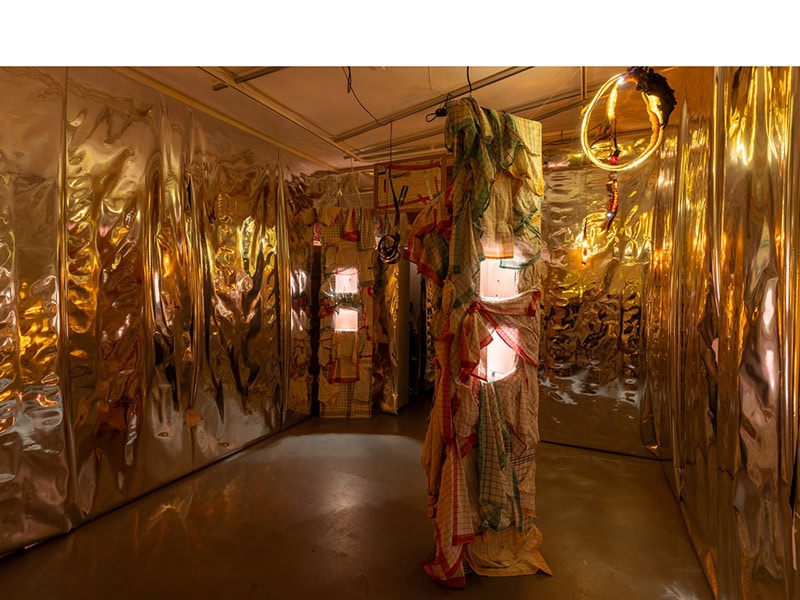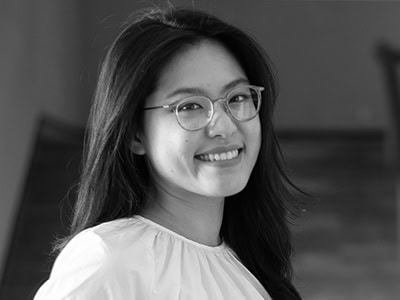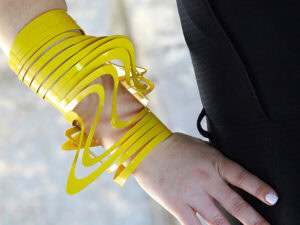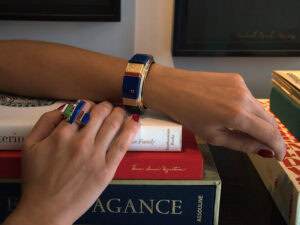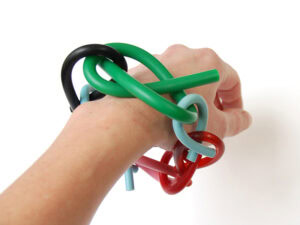
The name Karl Fritsch is synonymous with rings, and even the field of contemporary studio jewelry itself. In fact, the jeweler’s Instagram handle, @karlfritschrings, speaks to the form that he has dedicated to in the past few years (so much so that another Karl Fritsch has emphasized in his public profile that he is #notajeweller). Hypnotically monstrous and whimsically mischievous, the topsy-turvy world conjured within the rings Fritsch crafts fascinates with their blend of juxtapositions, of material, form, and themes. I have seen and admired Fritsch’s rings at numerous exhibitions, including the joint exhibition Arts & Crafts, which he had with Jack Hadley at Gallery Funaki in Melbourne (October 4–November 11, 2023). Yet it was only by experiencing it on a personal level that it occurred to me that, while Fritsch is a master of rings, he is also a maestro of collaboration.

For Karl Fritsch & Jack Hadley: Arts & Crafts, Fritsch and Hadley (whose practice spans jewelry, furniture, and ad-hoc electronics) featured new bodies of works: rings and lamps, respectively. Although these pieces were the calling cards for the exhibition, there was also a collaborative work the artists made a few days before the exhibition’s opening. Driven by a desire create a motif to unify their individual works within the gallery space, Fritsch and Hadley birthed the Free Solitaire Ring, a stamp inspired by a sketch Fritsch made of one of his rings, which Hadley brought to life in the 3D printer. The pair took this stamp, in two different sizes, and made their mark in the gallery space, from tea towels and bedsheets (and almost the walls) to the hands and arms of bodies who entered the gallery space. Fritsch and Hadley even entertained my suggestion that a print of Free Solitaire Ring could look great on a garment and agreed to a spontaneous printing session, freestyle inking up a red dress I had just bought. Free Solitaire Ring reflects the beauty of collaboration in enabling artists to not just expand beyond the material of their usual practice but explore visual language and ideas, and lean into the magic of the unknown.
Although Arts & Crafts was the first time I encountered and participated in spirit in Fritsch’s creative process, collaboration is not new to the artist. Rather, it is a constant thread that runs his practice. Fritsch studied at the Akademie der Bildenden Künste, in Munich, between 1987 and 1994, where as a young artist he was exhibiting alongside other makers. With such immersion in an environment pulsating with curiosity and proximity to other artists, collaboration became an organic outcome of this dynamic setting. This initial foray into collaboration set the stage for a lifelong journey, with Fritsch consistently exhibiting with and intertwining his artistic path with a myriad of makers across diverse fields.

The magic of collaboration lies not just in its definition—an act of working together to produce something—but in the fluidity of its process, a dance that unfolds in extemporaneous ways. Defying conventions is coded within Fritsch’s practice. One common manifestation of his collaborative ventures is the artful placement of works together, which becomes a catalyst that brings the work beyond the bounds of traditional categorizations. The process breathes life into new dialogues. An example of this is the remarkable display of Fritsch vs Wedd, a joint exhibition Fritsch had with celebrated Australian potter Gerry Wedd, who is interested in ceramics that present a narrative through surface imagery, at The National, Christchurch (November 15–December 9, 2023). There, Fritsch’s iconic rings found companionship with 178 mugs hand-drawn with bespoke illustrations by Wedd. Running in tandem across the wall of the gallery, they implored audiences to drive their own narratives through the pairing of form and imagery. Other works in the show included larger ceramic sculptures from which Fritsch’s rings hung, creating a new and intriguing form that added a layer of kitsch whimsy to the collaboration.
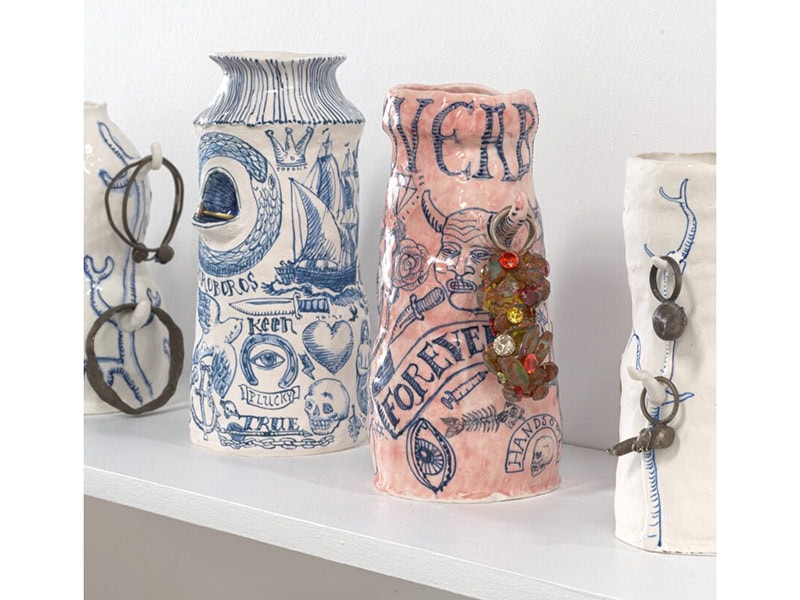
The combination of individual artistic works echoes the lasting collaborative relationship Fritsch has with contemporary artist Francis Upritchard, who presents distinctive sculptural figures and found objects in tableaux to elicit a sense of nostalgia, and with furniture designer Martino Gamper, whose work reinvents classic pieces of design. All three artists seek to challenge the arbitrary divide between art, craft, and design. The term they coined to describe their collaborations, Gesamtkunsthandwerk, tweaks the German word Gesamtkunstwerk, a term to refer to all arts, with the addition of the word “hand” in order to incorporate crafts, while also highlighting the intimate connection all three artists have with the hands in the making of their crafts. In their collaborations, Fritsch’s works adorn Upritchard’s creatures or found objects presented on pieces of furniture made by Gamper. Starting with Feierabend, presented at Kate MacGarry gallery in 2009, the trio has produced collaborative projects for over a decade.
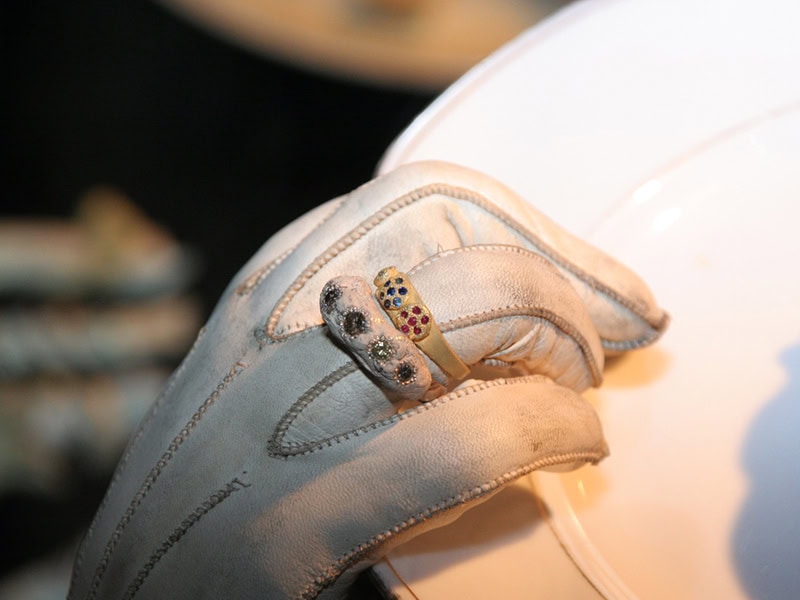
The assemblage of works by different artists is just one form of collaboration. In other methods, the artists work in tandem to create a single piece of work. Free Solitaire Ring follows this mode, echoing Fritsch’s earlier jewelry collaborations, including Hook and Sinker, made with New Zealand contemporary jeweler Warwick Freeman to include in their co-curated survey of New Zealand studio jewelry, Wunderrūma, in 2013. And his collaborations also include the recent installation by Fritsch and contemporary artist Robert Crotla, built at Galerie Biró, in Munich, where they showed Charlie (September 8–October 21, 2023). This collaboration saw Fritsch and Crotla transform the gallery’s white cube into a fun house of reflective liquid silver, from which small vignettes, framed by pastel tea towels, revealed Fritsch’s rings on a theatrical stage. The familiar environment of a gallery space is altered, and visitors are asked to see anew.
Similarly, in Brickell-brac, at Whangarei Art Museum (September 24, 2022–January 2023), Fritsch joins forces with potter Laurie Steer to pay homage to the legendary potter Barry Brickell. Brickell-brac is a site-specific project accomplished over the course of five days with the assistance of invited friends and collaborators (North Madison, Kalou Koefoed, Frederick Church, Josh Taylor, Simon Cuming, Paul Maseyk, and Sam Ireland). They worked with one ton of clay shipped over from Driving Creek, the ceramic studio Brickell created in the Coromandel, which became a mecca of creative collaboration. Unfired vessels, shelves, and landscapes dotted with platforms were created by many hands. Fritsch ensures each element finds its rightful place within the expansive exhibition, placing pieces together, squishing them together with his hands, or using a hose to melt bits together. Brickell-brac transcends the typical display, offering an immersive experience that blends studio visit, installation, and presentation, alongside audio, onsite performances, and ceramic workshop.
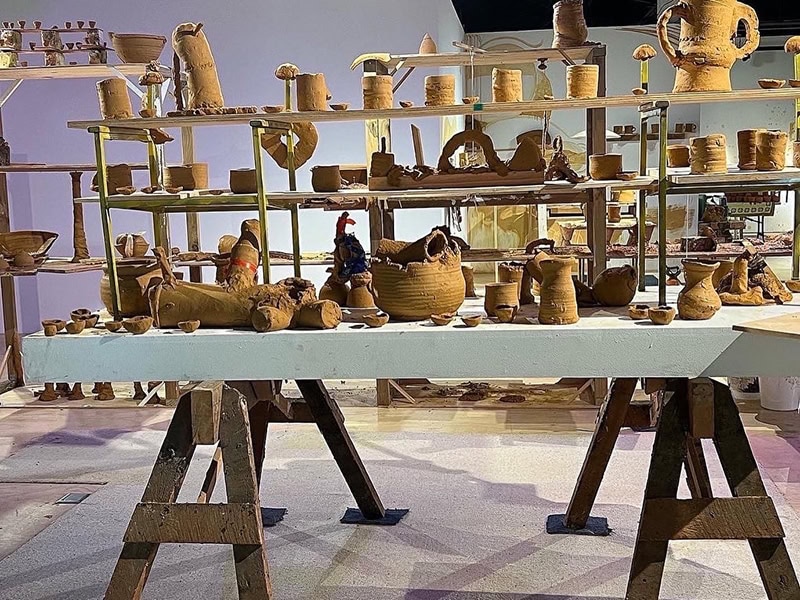
When asked about the positives and challenges of collaboration, Fritsch expressed a preference for collaborations that have a clear starting point where he can begin to infuse with his own creations. He highlighted the importance that freedom plays in his contribution. Fritsch’s favored mode of collaboration is exchange done sequentially, akin to the Surrealist game of exquisite corpse. Here, artists respond to each other’s works, creating a captivating fusion of diverse visions. Central to this approach is the pivotal role of freedom.
Fritsch’s collaboration with photographer Gavin Hipkins unfolded in this manner. Hipkins draws from a rich archive of negatives spanning over two decades of photography. He entrusted these images to Fritsch, who laid them on an aluminum sheet before weaving his magic through handmade marks and bedazzlement. This intervention not only honed in on the surface of the image but also illuminated the hidden layers of materiality—the silver gelatin and the aluminum sheet on which it rests. The resulting masterpiece transcends categorization, existing in the liminal space between photograph and jewelry, emerging as a sculptural entity that dares to defy.
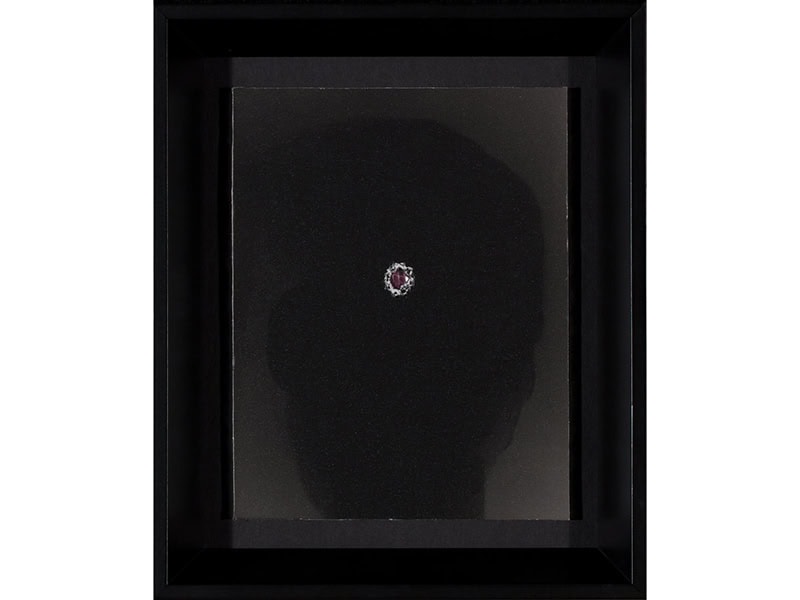
Initially it seemed to me that surveying Fritsch’s work through his collaborations would divide his oeuvre into two fields: contemporary studio jewelry and multimedia collaborations. Instead, Fritsch’s work was revealed not as separate series but as united creations, an unmistakable signature. Regardless of the form Fritsch’s works take, ring shaped or not, at the core they are driven by a desire to question the structures that hold up societal conventions—to blur and break imagined boundaries. What initially appears as a departure reveals itself as an intrinsic part of Fritsch’s practice.
We welcome your comments on our publishing, and will publish letters that engage with our articles in a thoughtful and polite manner. Please submit letters to the editor electronically; do so here.
© 2024 Art Jewelry Forum. All rights reserved. Content may not be reproduced in whole or in part without permission. For reprint permission, contact info (at) artjewelryforum (dot) org


